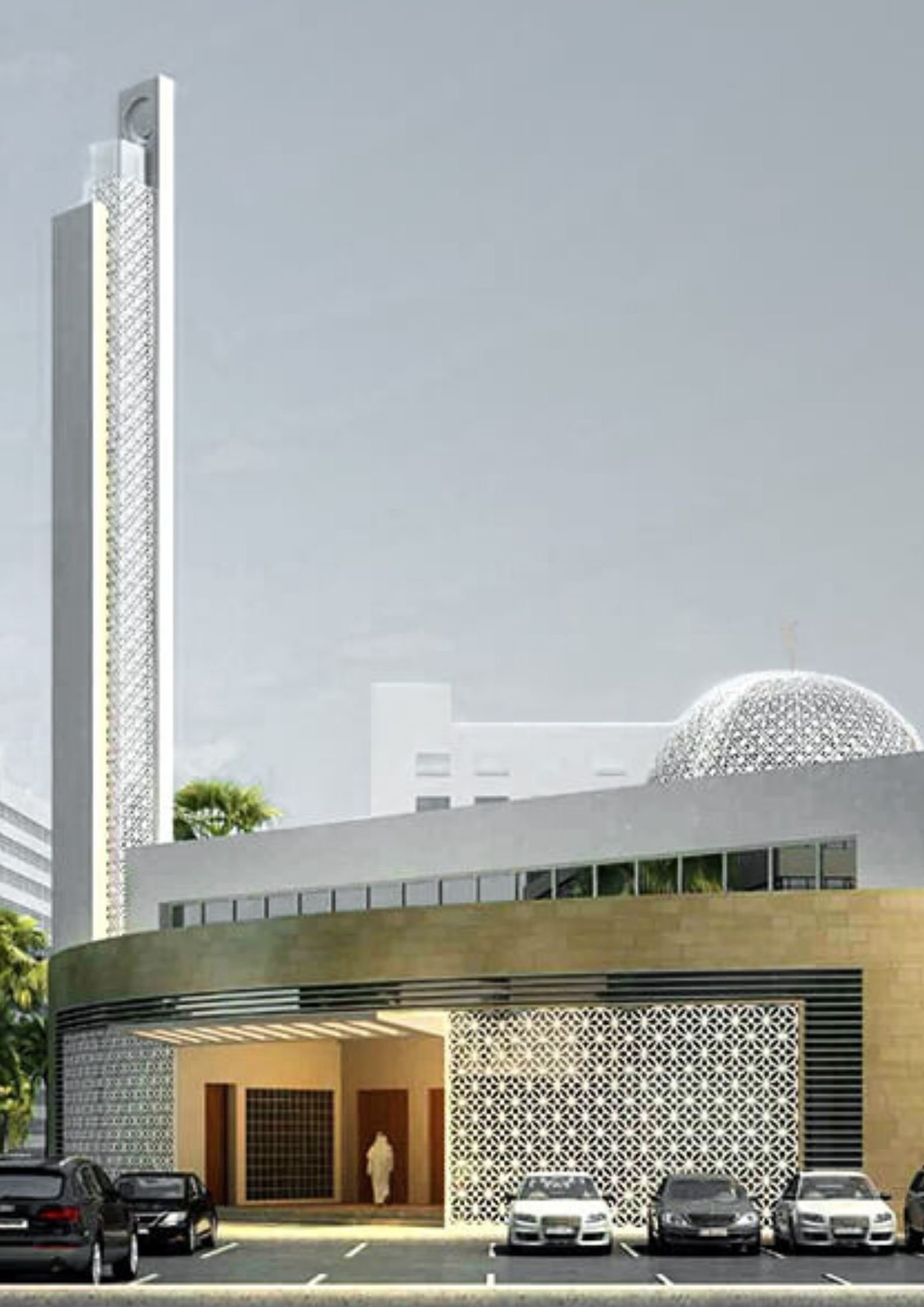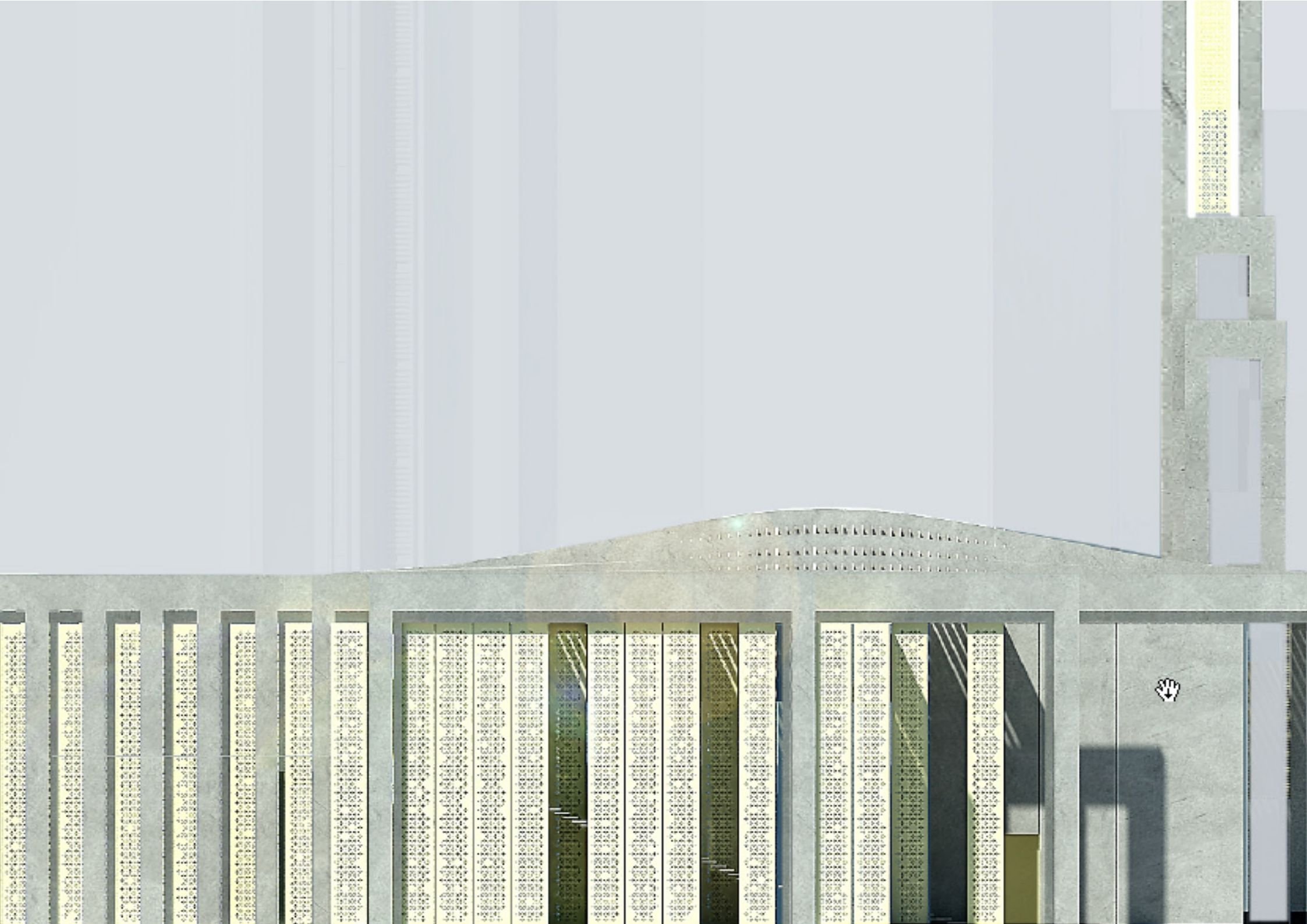Mashrabiya for Mosques
Mashrabiya screens, known for their intricate geometric patterns and latticework, are commonly used in mosques.
HOW IT WORKS?
How to find mashrabiya for your project?
01. TELL US WHAT YOU NEED DESIGNED
It all starts with a good brief. What is it that you are exactly trying to achieve?
02. DETERMINE TECHNICAL SPECIFICATIONS
We help you make the right selection for the patterns, dimensions, material thickness, coloring, etc.
03. SELECT ABIYA
Once you’ve specified an ABIYA product, it's time to deal with two things: cost and timing.
ALUMINIUM MASHRABIYA
Aluminium Mashrabiya
Mashrabiya screens, known for their intricate geometric patterns and latticework, are commonly used in mosques for several reasons:
Privacy and Modesty: Mashrabiya screens provide privacy for worshippers inside the mosque, particularly for areas where women pray. These screens allow airflow and light while maintaining modesty, creating separate spaces for different genders without completely segregating them.
Aesthetic Appeal: The intricate geometric designs of mashrabiya screens add to the aesthetic beauty of mosques. These patterns, often inspired by Islamic art and architecture, create visually stunning effects when sunlight filters through them, enhancing the spiritual atmosphere of the mosque.
Symbolism: The geometric patterns and latticework of mashrabiya screens often carry symbolic meanings in Islamic art and architecture. These symbols can represent concepts such as unity, infinity, and the interconnectedness of all creation, reinforcing the spiritual significance of the mosque as a place of worship and community.
Ventilation and Climate Control: Mashrabiya screens allow for natural ventilation, helping to cool the interior spaces of the mosque, especially in hot and arid climates. This natural cooling effect contributes to the comfort of worshippers during prayers and gatherings.
Tradition and Heritage: The use of mashrabiya screens in mosques reflects a rich tradition of craftsmanship and architectural design in Islamic culture. By incorporating these traditional elements into mosque architecture, designers and architects pay homage to the cultural heritage of the region and create a sense of continuity with the past.
Overall, mashrabiya screens serve both functional and symbolic purposes in mosques, providing privacy, enhancing aesthetics, facilitating ventilation, and connecting worshippers to Islamic tradition and heritage.
MASHRABIYA FOR Mosques, MANUFACTURED BY ABIYA
Inspiration
MASHRABIYA FOR Mosques, MANUFACTURED BY ABIYA
Our work is as diverse and elegant as our Clients.
Aluminium Mashrabiya, Thickness: 6mm; Finish: Powder Coating
algiers, Algeria
Aluminium Mashrabiya, Thickness: 3mm; Finish: Anodising
RIYADH, SAUDI ARABIA
Aluminium Mashrabiya, Thickness: 6mm; Finish: Powder Coating
Abu Dhabi, UAE
Aluminium Mashrabiya, Thickness: 3mm; Finish: Anodising
riyadh, SAUDI ARABIA
Aluminium Mashrabiya, Thickness: 3mm; Finish: Powder Coating
ABU DHABI, UAE
Aluminium Mashrabiya, Thickness: 6mm; Finish: Powder Coating
DUBAI, UAE
We are a design and manufacturing firm specialized in
Middle-Eastern decorative panels for exterior and interior spaces.
Why you should choose ABIYA for your mosque project?
Mosque architecture is a fascinating blend of artistic expression and cultural tradition. Here are some key aspects and features commonly found in mosque architecture:
Minarets: These tall, slender towers are one of the most recognizable features of mosque architecture. Historically used to call worshippers to prayer, minarets now serve as architectural symbols of Islam. They are often adorned with decorative elements such as geometric patterns, arabesques, and calligraphy.
Domes: Domes are another prominent feature of mosque architecture, symbolizing the celestial sphere and the heavens. They often cover the main prayer hall or the central area of the mosque. Domes can vary in size, shape, and ornamentation, ranging from simple to elaborate designs.
Prayer Hall: The prayer hall is the central space within a mosque where worshippers gather for prayer. It is typically characterized by an open, column-free area to accommodate congregational prayer. The orientation of the prayer hall towards the qibla (the direction of Mecca) is a fundamental aspect of mosque design.
Courtyards: Many mosques include courtyards or open-air spaces surrounding the prayer hall. These areas serve as gathering spaces for worshippers before and after prayer, as well as for community events and social gatherings.
Decorative Elements: Mosque architecture often features elaborate decorative elements such as geometric patterns, arabesques, floral motifs, and calligraphy. These decorations are found on walls, domes, minarets, and other architectural elements, serving to beautify the mosque and convey spiritual messages.
Overall, mosque architecture reflects the diverse cultural and artistic traditions of the Muslim world while also embodying the spiritual values and principles of Islam. It continues to evolve and adapt to contemporary needs while maintaining a strong connection to its rich historical and cultural heritage.
01. SPECIALIZATION
ABIYA operates in a niche market and focuses on Mashrabiya, fretwork, jali and decorative screens. That allows the company to create a competitive advantage to provide a better services and pricing to the client.
02. CULTURAL UNDERSTANDING
What sets us apart is our deep understanding of this beautiful region. Every project we design has a unique story, always inspired by local art, culture and history.
03. FINEST QUALITY MASHRABIYA PANELS
Attention to details, high quality materials, beautiful pattern designs - You're receiving the finest quality Mashrabiya panels you can find in the Middle East.
04. COMPETITIVE PRICES
By keeping our production in-house, our prices are incredibly competitive. So there's a high chance the contractor will pick ABIYA for your next mosque project.
MASHRABIYA - mOSQUES FOR INSPIRATION
Mosques, inspired by the elegance of the Islamic geometric patterns.
WHY MASHRABIYA FOR MOSQUES?
Enhances the beauty and functionality.
Provides ventilation and natural lighting.
Brings shading to outdoor spaces.
Ensures Privacy.




















